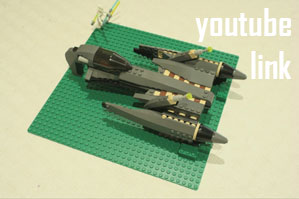Just in time for its 10th year anniversary, "Trinity Help" is a frame-accurate stop-frame animation
of the famous bullet-dodge scene from the 1999 movie The Matrix, all done in Lego.
By "frame accurate" we mean that we took all of the video frames from that part of the movie
(that's nearly 900 frames for just 44 seconds of footage) and reproduced them all in Lego.
This was time-consuming to say the least, taking us something like 440 hours to make the completed
movie. At that ratio of 10 hours per second we figured we could do the whole film in about 9 years,
so long we didn't need to eat or sleep. As a full-time job then, we're probably looking at 25 years
or so. No thanks.
Early in the piece we decided we wanted to do everything "in camera". No wire-removal, no special
effects, no crazy Photoshop tricks. We pretty much regret this now, but I guess it gives us bragging
rights of some sort. We did do some colour correction and image stabilising, and at one point we
edited a very small number of frames in one scene so that some minor background shake was taken out,
but that's it.
We went to great lengths to match camera angles, lighting conditions, continuity errors, focal depths
and so on, but obviously we had to work within the limitations of point and shoot cameras and the
Lego medium. Not having any knees or elbows on the minifigs can make it tricky to reproduce the
actor's movements, but we tried our best.
The project came about after sitting around with some spare time and making a build animation of a
Lego spaceship that Trevor had.
 |
| home | about | making of | videos | faq | contact |

 |



